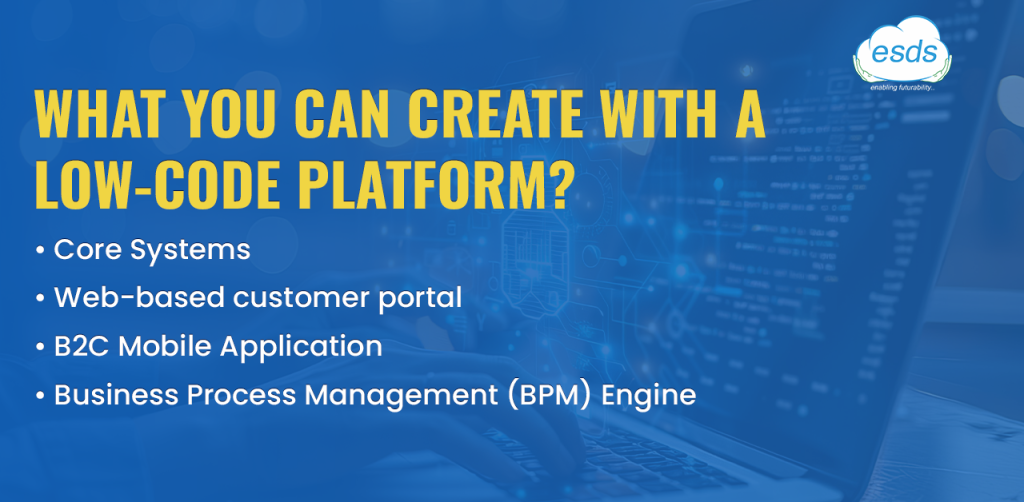Why and How is Low-Code the Future of Software Development?

How many excellent applications could not reach the market because developers have the financial means or technical abilities to create them?
Coding is a time-consuming, costly, and tiresome activity. Once you scratch the surface of software development, the technical phases required to create a contemporary, secure, and dependable app are sometimes daunting. Because of the difficulties in developing cutting-edge software, 61% of company stakeholders report implementing fewer than half of their suggested IT solutions.
According to the US Bureau of Labor Statistics, the demand for software developers is estimated to grow by 22% between 2020 and 2030. However, every organization needs more qualified professionals to meet their development needs.
This is where the benefits of low-code development come into the picture. Are you curious to know what these terms mean and how they will shape the future of software development—mainly for business leaders with little coding knowledge? This article will answer and touch upon some critical aspects of low-code platforms.
What is Low-Code?
Low-code is an intuitive approach to software development that requires little to no coding to create an app. Instead of writing many lines of code in difficult programming languages, you can simply ‘create’ an app using drag-and-drop functionality and logic-driven graphical interfaces.
So, even if you don’t have a sophisticated understanding of development or coding, you can utilize these new ways to create software that meets your needs, whether it’s mobile or commercial apps. A low-code platform is a rapid and convenient alternative to traditional software development, gaining popularity among professional and non-professional developers.
How Does the Low-Code Development Process Works?
Ask any developer, and you’ll get one steady answer – coding is challenging. Yes, coding comes naturally to some gifted developers, but they’re thin on the ground. It takes quite a long time for developers to hone their knowledge and things to consider while building efficient software from scratch.
This is why senior developers are a valuable asset for your organization – and this is why the demand for skilled developers is increasing across all industries.
Hence, a low-code platform empowers you to create apps via visual configuration and user interfaces within a programming environment. While you don’t have to learn traditional hand-coded computer programming, skilled developers are still valuable. They can focus on more complex tasks and ensure the quality of the app built using the low-code platform.
Low-code platforms enable developers to incorporate basic elements into apps and workflows easily. These building blocks eliminate the need for manual coding, accelerating the app development process and freeing up valuable time for other critical tasks. This efficiency boost is a game-changer for business apps and interfaces.
Current Stats of the Market on Low-Code Development Process
Low-code app development, a trend gaining momentum, is now at the forefront due to the convergence of hyper-automation, digital disruptions, and the rise of composable business. This has led to a surge in demand and the emergence of new tools.
Anyway, here are some striking figures and facts that speak volumes about the advancements and benefits of low-code development.
- The worldwide low-code development market will reach $13.8 billion by 2024, a 22.6% rise from last year.
- By 2024, 65% of app development activities will belong to low-code app development.
5 Key Features of a Low-Code Development Platform

Here is an overview of the exciting features of low-code platforms that are the cornerstone of this software development approach.
- Out-of-the-Box (OOTB) Functionality
OOTB is a stand-out functionality of low-code development that eliminates the need to create core components of an app from the very beginning. From sales process or service management to data storage, such modules provide the essential functionalities of app development.
- Visual Development Tools
Low-code platforms include efficient built-in components that present information in an understandable format, regardless of your level of tech knowledge. Visual modeling tools and templates can speed up software development for everyone, from non-technical enterprises to expert developers.
- Drag-and-Drop Interfaces
It is a notable feature of low-code platforms that speed up development processes. Such functionalities enable you to drag and drop multiple components instead of developing them all independently. Hence, professional and citizen developers can quickly build apps with the benefits of low-code platforms.
- Scalability
Scalability is something you can’t overlook in low-code and traditional software. With low-code development, apps can easily adapt to increasing business goals and changing trends in the software industry. Your low-code apps should manage the growing number of users, be they 50 or 50 thousand.
- Security
Besides being functional and user-friendly, low-code platforms must also be secure solutions for app development. Therefore, ensure you’re following the necessary protocols for the security of the app and the platforms as a whole.
Difference between Low-Code vs. no-code
Low-code and no-code – throughout my app development experience, I’ve seen multiple clients using these terms interchangeably, although these platforms are not the same. Low-code is for developers. Such systems require some technical knowledge but empower skilled developers to work quickly. For developers, the more efficient the tools and methods to boost the development process, the better.
In contrast, no-code platforms target everyone, especially non-technical business owners, as these systems don’t require coding skills. While developing a low-code app, you don’t have to manually write code to provide a user-friendly interface and engaging interface. It’s completely coding-free, and your enterprise users will most likely like the user interface if it’s more intuitive.
What You Can Create with a Low-Code Platform?

Low-code platforms are exceptionally useful for software development, but many other ways exist to reap their benefits. For years, developers have been helping businesses leverage the power of low-code development and create an ecosystem that allows them to use such apps efficiently.
Here are three critical use cases of low-code development that suit you the best.
1. Core Systems.
A core system based on contemporary technology is extremely beneficial in various ways, including the ability for your company to scale fast as it grows, adapt to changing market conditions, and respond to the newest consumer and staff preferences.
You don’t have to invest in commercial off-the-shelf (COTS) items and then spend extra money on modification. You also don’t need to create code in-house to update or remodel existing old systems. Even a few years ago, I saw several organizations struggle with these two time—and resource-intensive solutions.
2. Web-based customer portal.
If you didn’t know, client portals might be an excellent digital tool for your organization. Customers benefit from a self-service experience since they can complete typical actions such as browsing offerings, obtaining an estimate, making payments, and so on without dealing with anyone. So, using a low-cost web-based portal, you may provide an excellent client experience while also discovering new revenue sources.
Furthermore, it is difficult to create a successful consumer portal, regardless of its worth. The traditional development method is expensive and time-consuming, and COTS software cannot fully meet your objectives.
3. B2C Mobile Applications
Mobile apps have provided us with an excellent chance to enhance our consumer base and maximize corporate income. But what if you, like most people, lack the money and ability to create a mobile app? Furthermore, creating separate versions for different mobile architectures may be a significant challenge for you. Low-code platforms can help you with this by streamlining the creation of appropriate mobile apps using current workers.
4. Business Process Management (BPM) Engine
Low-code solutions are a game-changer in business process management. These applications empower you to automate and handle processes more efficiently, freeing up valuable time and resources.
While other BPM platforms may be complex, low-code BPM stands out for its simplicity and accessibility. It’s a highly successful low-code app that caters to many developers, from professionals to citizen developers.
What Factors Will Determine the Future of Low-Code Development
Let me show you the three prominent factors that are most likely to shape the future of low-code development:
- Increased Adoption of Low-Code Platforms by Enterprises
The low-code platform’s pre-built modules and components are perfectly designed for business and technical users to boost enterprise productivity. As a result, 55-65% of traditional app development will shift to low-code development in the next five years.
- Big Investors in Low-Code Platforms
Low-code platforms are getting huge investments from the top three public cloud vendors today – Google, Microsoft, and Amazon. Along with established low-code vendors like Low Code Magic, Platforms have surfaced as the most powerful platforms for businesses.
Conclusion
In the future, and even now, low-code and no-code development will open up the software development world to many innovative minds. Low-code solutions can be a real game-changer for your business in the right circumstances.
It’s time to build a low-code app and take your business to the next level without hassle. Contact a top-rated software development partner like Low Code Magic to benefit from low-code development.
- Understanding Private Cloud Services in Enterprise IT Environments - April 17, 2025
- Why Do You Need Vulnerability Assessment and Penetration Testing? - March 13, 2025
- How to Choose the Right Private Cloud Service Provider in 2025? - February 27, 2025
